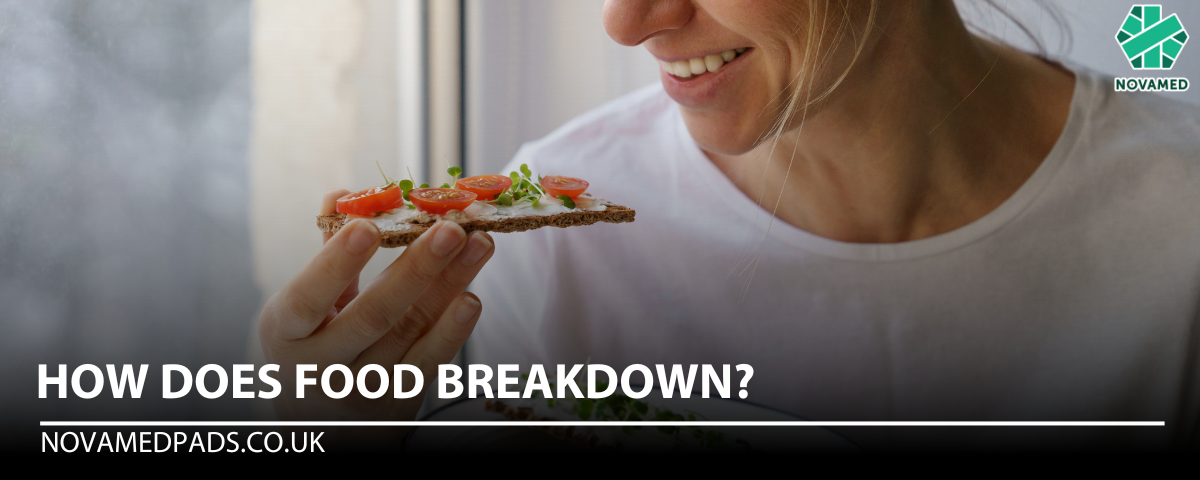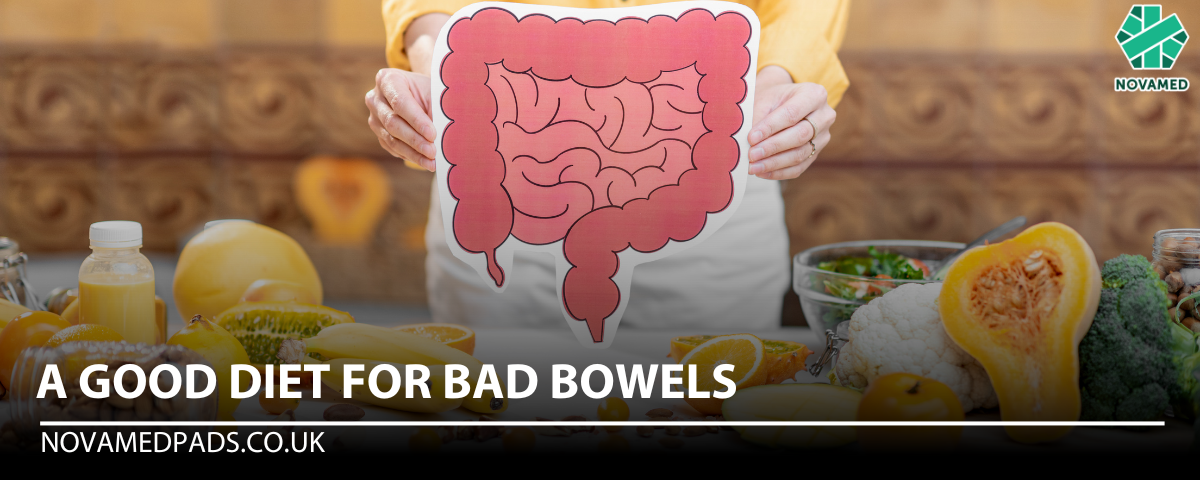
How Does Food Breakdown?
In this article, we will explore how food breaks down in our bodies, how foods are classified during factory processing, the effects of poor-quality nutrition, and what to avoid. Finally, we’ll uncover why mixing different types of food can affect digestion. All this and more is covered in this Novamed Pads post.
Stages of Food Breakdown
There are three main stages involved in food digestion:
1. Chewing: The Mechanical Breakdown of Food
The first step in food breakdown is chewing. This mechanical process breaks food into small pieces, allowing for easier digestion. Chewing also mixes different foods together, helping your body interact with and absorb the nutrients more efficiently.
For instance, when you eat chicken with broccoli and potatoes, the mixing during chewing aids in the chemical interaction needed for optimal digestion. Without this process, each food item would break down separately, which could make it harder for your body to extract all the nutrients.
This concept also applies to how we process food using cooking equipment. For example, boiling broccoli in its own water is different from boiling broccoli and potatoes together. In the latter case, both vegetables break down differently, creating a stew-like consistency that changes how the nutrients are absorbed.
2. Food Digestion Requires Energy
After chewing, food must be combined with an energy source for your body to use it efficiently. If food is eaten alone without enough energy, your body may struggle to process it fully, slowing down digestion.
For example, eating raw broccoli can be problematic as your body might not effectively digest it without proper cooking or pairing it with other foods. However, steaming or boiling broccoli makes it more digestible and easier for your body to process.
3. Absorption of Nutrients
Finally, food is broken down in your stomach and absorbed into your intestines. Your stomach can only hold a limited amount of food, so anything not digested in time could start to rot, leading to discomfort or even illness. The nutrients your body needs are absorbed into the bloodstream, while the rest is excreted.
The Impact of Low-Quality Nutrition
Low-quality nutrition can significantly impact your health. There are two main types of low-quality foods processed in factories:
-
Slow Breakdown Foods – These foods degrade gradually and last longer in an edible state, often referred to as "junk food."
-
Short-Lived Nutritional Foods – These are high-quality foods that break down quickly and are immediately usable by your body.
Low-quality foods are often processed with methods that prioritize cost-cutting, sacrificing nutritional value. Consuming these foods can lead to poor health, reduced energy levels, and a range of digestion problems.
Bladder and bowel incontinence may be caused by conditions which can be treated medically. Please consult your physician for medical advice and guidance.




